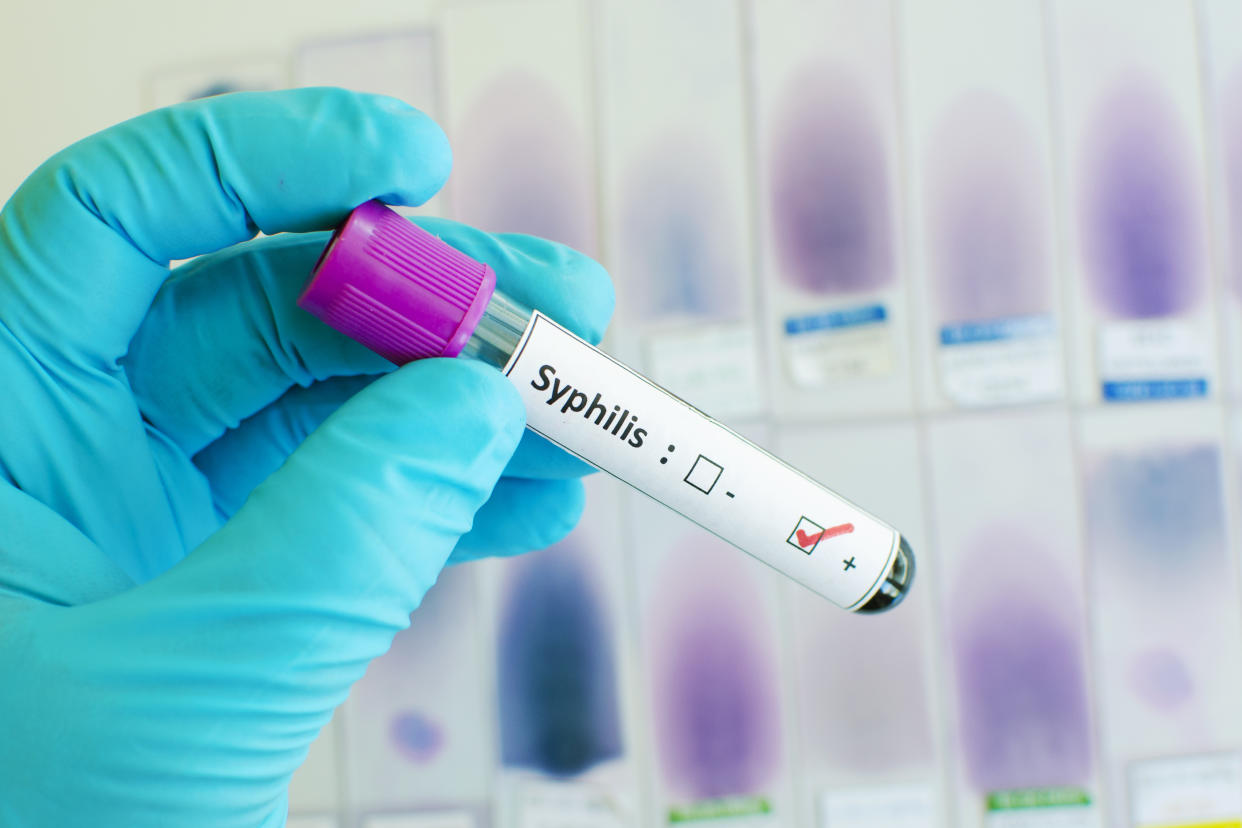Syphilis cases are on the rise. The FDA just approved a home test that could combat that.

Soon you will be able to test for syphilis at home, thanks to a first-of-its-kind approval from the Food and Drug Administration this week. The test could help curb a recent uptick in infections of the sexually transmitted infection. Here’s what you need to know.
What is syphilis? How is it spread?
Syphilis is a sexually transmitted infection (STI) caused by the bacterium Treponema pallidum. Syphilis is typically spread through direct contact with a syphilis sore, known as a chancre, during vaginal, anal or oral sex. It can also be passed from a pregnant person to a child during birth. Despite misconceptions, people cannot get syphilis through shared contact with things like doorknobs, toilet seats or swimming pools.
What’s happening now?
The FDA just approved the first at-home test to detect syphilis antibodies, which will make it easier for people to screen themselves for this sexually transmitted disease. The test from NOWDiagnostics gives results in about 15 minutes; however, a positive result should be followed up with a visit to a medical professional in order to confirm the diagnosis.
The hope is that these tests will boost syphilis screening rates, allowing people to take action before they can spread the infection.
What are the symptoms of syphilis?
There are four stages of syphilis, each with specific symptoms. In the primary stage, a person may develop sores at the site of infection, typically on the genitals, anus or mouth. The secondary stage can cause skin rashes, sores in the mouth or genital area, fever, swollen lymph nodes and other symptoms like headaches and muscle aches. The third stage, called the latent stage, has no visible symptoms.
The final stage, known as the tertiary stage, can lead to severe complications, attacking internal organs and causing severe neurological symptoms, as well as loss of sight and hearing. This can occur 10 to 30 years after initial exposure.
What to know about pregnancy and syphilis
If you are pregnant and have syphilis, it is possible for the infection to lead to a miscarriage or stillbirth. Babies born may be premature or have a low birthweight.
Babies who are born with congenital syphilis may not show any symptoms initially, but they will have serious issues later on if the infection is left untreated. However, others may suffer from bone deformities, severe anemia, enlarged liver and spleen, jaundice and severe neurological problems like blindness or deafness, per the Centers for Disease Control and Prevention.
Congenital syphilis cases have more than tripled in recent years, with over 3,700 cases reported in 2022, according to the CDC. This is the highest number since 1994.
How is syphilis treated?
Penicillin is the most commonly used antibiotic to treat syphilis. Other options may be used if you are allergic to penicillin, or your doctor may recommend a regimen that will allow your body to get used to the antibiotic before treatment, which is required for pregnant individuals. Typically, a single shot of penicillin will treat the STI, though more doses may be required depending on the stage of your illness.
Why are we talking about syphilis now?
Syphilis cases are rising and have been for decades, even as cases of other STIs like chlamydia and gonorrhea are decreasing or remaining steady.
In 2022, more than 200,000 cases of syphilis were diagnosed in the United States — an 80% increase from 2018. It’s the highest level since the 1950s, when people did not have readily available treatment plans and had limited knowledge of the disease.
One reason experts point to for the rising cases is the “decrease in funding for sexual health services and programs throughout the last couple of decades,” Kristen Krause, deputy director for the Center for Health, Identity, Behavior and Prevention Studies at the Rutgers School of Public Health, previously told Yahoo Life. This means fewer people are getting tested for syphilis, including people who can spread it to partners or children during birth.
Earlier this year, the U.S. Department of Health and Human Services announced plans to fight the syphilis epidemic, which included addressing drug shortages, enhancing community input through workshops and expanding syphilis prevention and treatment efforts, particularly in populations most affected by the epidemic. This includes American Indian and Alaska Native people, as well as Black and Hispanic communities. Men who have sex with men are also more likely to be affected by syphilis.


